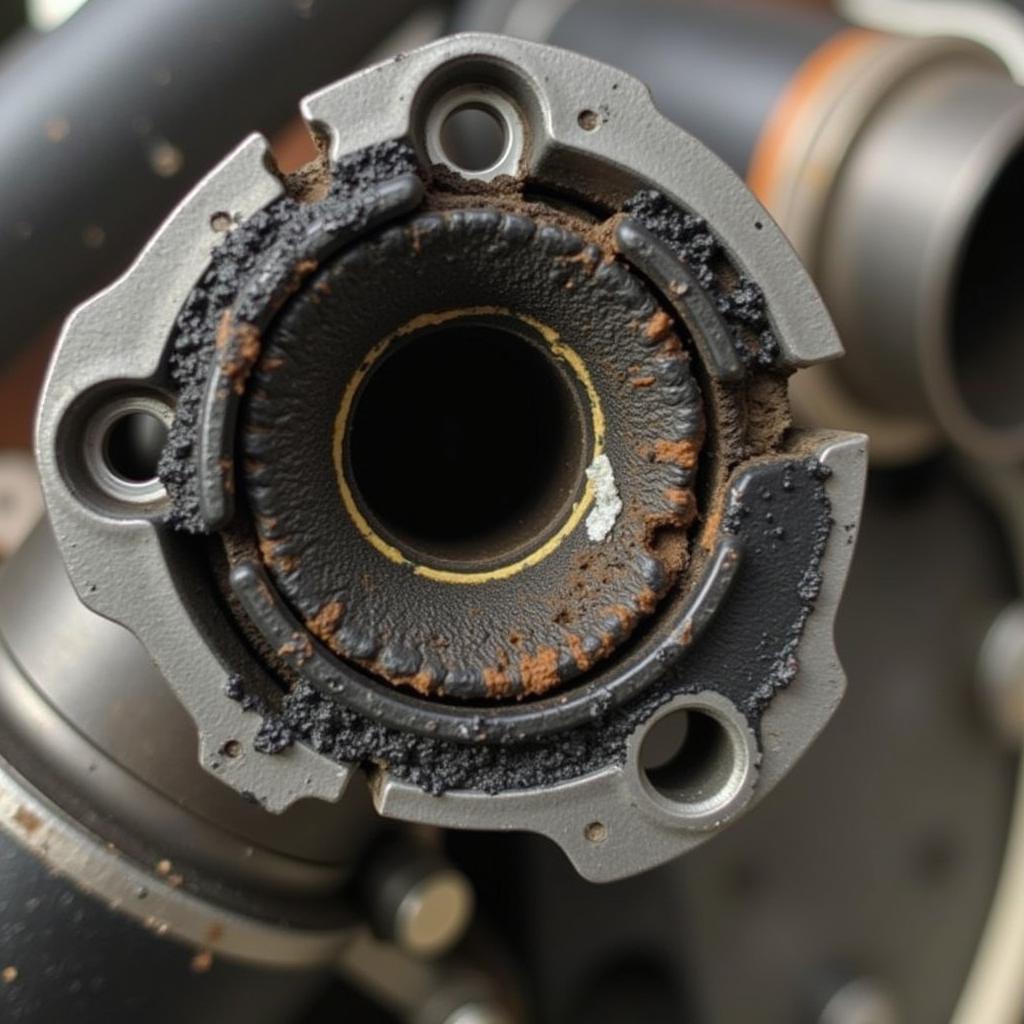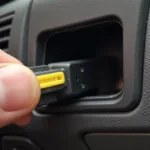The dreaded P0505 code. It’s a sight no car owner wants to see on their OBD2 scanner, signaling trouble with your vehicle’s idle air control system. But what does the P0505 code really mean, and how worried should you be? This comprehensive guide will delve into the intricacies of the P0505 code, explain its causes, symptoms, diagnostic process, and potential solutions.
Understanding the P0505 Code: A Deep Dive
Your car’s engine needs the perfect blend of air and fuel to run smoothly, especially when idling. This is where the Idle Air Control (IAC) system comes in. The IAC valve, controlled by your car’s computer (ECU), regulates the amount of air that bypasses the throttle plate, ensuring a steady idle speed.
When the ECU detects an inconsistency between the desired idle speed and the actual idle speed, it throws the P0505 code – indicating a malfunction within the IAC system.
Causes Behind the P0505 Code
A P0505 code can stem from a variety of culprits, often interconnected:
-
Faulty IAC Valve: The most common offender, a malfunctioning IAC valve can stick open or closed, disrupting airflow.
-
Vacuum Leaks: Leaks in the intake manifold or hoses connected to the IAC valve can disrupt airflow measurements, confusing the ECU.
-
Wiring Problems: Damaged, corroded, or loose wiring connecting the IAC valve to the ECU can disrupt communication.
-
Dirty Throttle Body: Carbon buildup in the throttle body can restrict airflow and affect the IAC valve’s operation.
-
ECU Issues: While less common, a faulty ECU can misinterpret data or send incorrect signals to the IAC valve.
Recognizing the Symptoms: Is It Really P0505?
Ignoring a P0505 code can lead to worsening symptoms and potential engine damage. Be on the lookout for:
-
Rough Idle: Your engine may shake or vibrate noticeably while idling.
-
Stalling: The engine may stall frequently, especially after starting or coming to a stop.
-
High or Low Idle Speed: The engine may rev higher or lower than normal while idling.
-
Check Engine Light: The dreaded check engine light will illuminate on your dashboard.
-
Increased Fuel Consumption: A malfunctioning IAC system can lead to decreased fuel efficiency.
Diagnosing the P0505 Code Like a Pro
While a P0505 code points to the IAC system, pinpointing the exact cause requires a systematic diagnostic approach:
-
Retrieve Trouble Codes: Use an OBD2 scanner to read the trouble codes stored in your car’s ECU. Note any additional codes alongside the P0505.
-
Inspect the IAC Valve: Visually inspect the IAC valve for obvious damage, dirt, or debris.
-
Check for Vacuum Leaks: Inspect hoses and connections around the intake manifold for leaks using a carburetor cleaner or a smoke machine.
-
Test the IAC Valve: Follow manufacturer instructions to test the IAC valve’s electrical resistance and functionality.
-
Inspect Wiring and Connectors: Examine the wiring harness and connectors for damage, looseness, or corrosion.
-
Clean the Throttle Body: Clean the throttle body using a specialized cleaner and a brush, ensuring it’s free of carbon buildup.
Fixing the P0505 Code: Restoring Your Engine’s Harmony
Once you’ve identified the root cause, resolving the P0505 code often involves one or more of these solutions:
-
Replace the IAC Valve: A faulty IAC valve usually requires replacement.
-
Repair Vacuum Leaks: Replace damaged hoses, tighten loose clamps, or seal leaks in the intake manifold.
-
Repair or Replace Wiring: Repair or replace damaged wiring or connectors to ensure proper communication between the IAC valve and ECU.
-
Clean or Replace the Throttle Body: Thoroughly clean the throttle body or replace it if the buildup is severe or damage is present.
-
Consult a Mechanic: If the issue persists or you’re uncomfortable with DIY repairs, consult a qualified mechanic for further diagnosis and repair.
Expert Insights
“Many car owners underestimate the importance of regular maintenance,” says John Smith, a seasoned automotive engineer with over 20 years of experience. “Simple tasks like cleaning the throttle body and inspecting vacuum hoses can prevent issues like the P0505 code and save you costly repairs down the road.”
Preventing Future P0505 Codes: Proactive Measures
While not all causes are preventable, these proactive measures can significantly reduce the likelihood of encountering the P0505 code again:
-
Regular Maintenance: Adhere to your car’s recommended maintenance schedule, including regular inspections of the IAC valve, throttle body, and vacuum hoses.
-
Quality Fuel and Air Filters: Using high-quality fuel and air filters can prevent contaminants from entering the engine and affecting the IAC system.
-
Address Issues Promptly: Don’t ignore warning signs like rough idling or stalling. Addressing minor issues early can prevent them from escalating into major problems.
Conclusion
The P0505 code, while daunting, is often resolvable with proper diagnosis and repair. Understanding its causes, symptoms, and solutions empowers you to take control of your vehicle’s health and ensure a smooth, efficient, and enjoyable driving experience.
FAQ
-
Can I drive my car with a P0505 code? It’s not advisable to drive extensively with a P0505 code as it can lead to further engine damage or safety hazards.
-
How much does it cost to fix a P0505 code? The repair cost varies depending on the underlying cause, ranging from a few dollars for a new hose clamp to a few hundred dollars for an IAC valve replacement.
-
Is a P0505 code a serious problem? While not immediately catastrophic, ignoring a P0505 code can lead to worsening symptoms, decreased fuel efficiency, and potential engine damage.
-
Can a dirty air filter cause a P0505 code? While a dirty air filter itself may not directly cause a P0505 code, it can contribute to a range of engine performance issues, including rough idling and stalling.
-
How often should I clean my throttle body? It’s generally recommended to clean your throttle body every 30,000 to 50,000 miles or whenever you experience symptoms like rough idling or reduced engine performance.
Explore More
Looking for more insights into car diagnostics and troubleshooting? Check out our other informative articles on OBD2 codes and car maintenance tips:
- [P0420 Code: Understanding Catalyst System Efficiency Below Threshold]
- [The Ultimate Guide to Understanding and Using Your OBD2 Scanner]
Need personalized assistance with your car troubles? Our team of experts is just a message away. Contact us via WhatsApp: +1(641)206-8880, Email: [email protected]. We offer 24/7 support to help you get back on the road with confidence.


